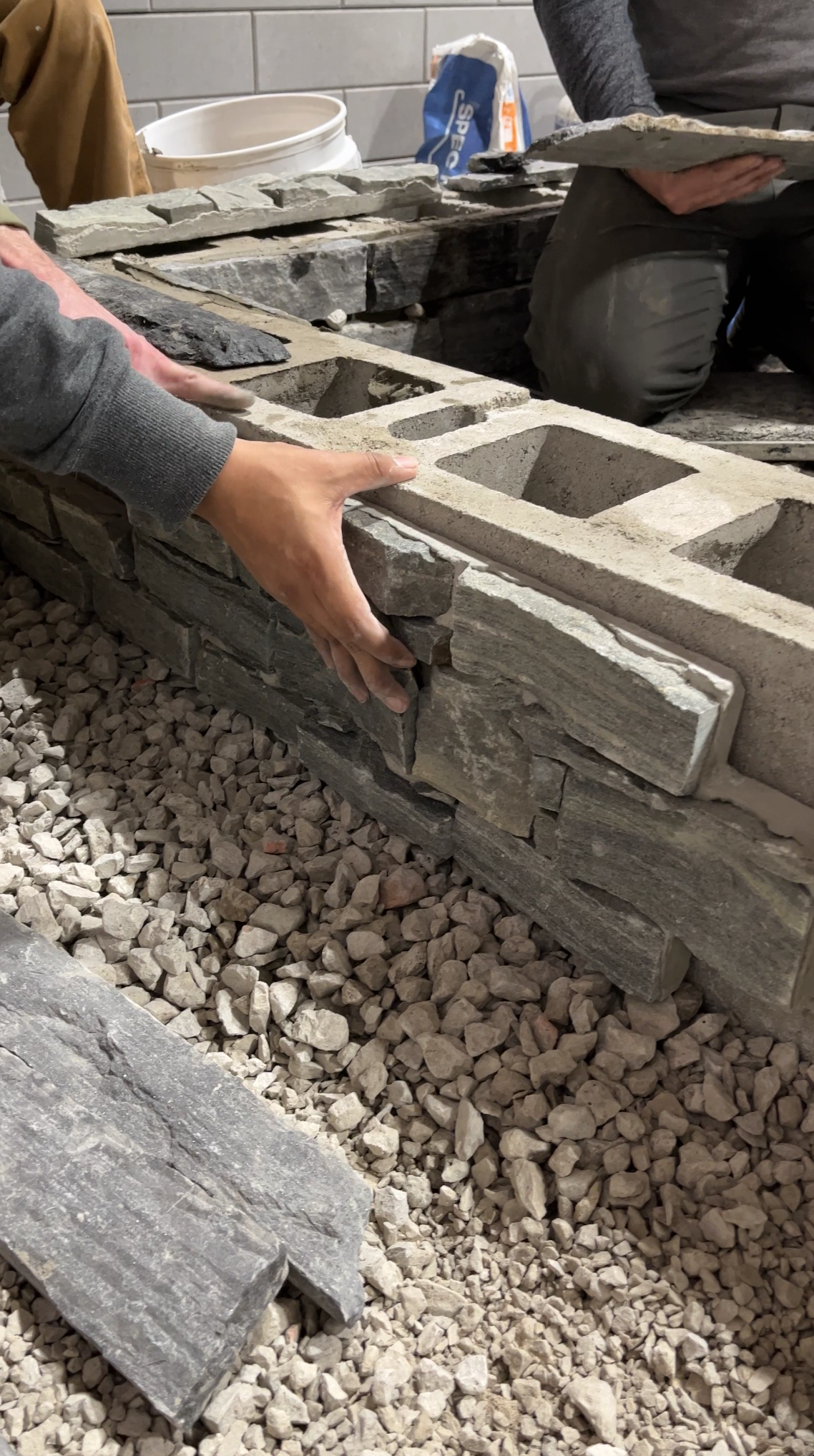
Precision in Every Cut: A Guide to Handling Manufactured Stone Veneer
Published:
Last Updated:
Author:
instone

Precision in Every Cut: A Guide to Handling Manufactured Stone Veneer
Aura Natural Landscapes revolutionary new product wows installers and homeowners
This seasons’ most sought-after product for backyard patios bring a rustic, natural look that standard backyard pavers can’t beat. Thanks to consistent cuts, and stone pavers that fit together like pieces of a puzzle, irregular flagging is in high demand. Irregular flagging is showing up in backyard patios, walkways, and poolside hardscaping.
Installers commonly assume that irregular flagging projects take more time and money than standard ones. This is because the stones used have different thicknesses and shapes. However, Aura Natural Landscapes is turning this notion on its head by producing precut, consistent stones. They are 10 times faster to install than other irregular flagging products. .
Irregular flagging, sometimes called irregular pavers, are flat pieces of stone that are not uniform in shape and size. Arranged together, they create attractive mosaics that can call other patterns in nature to mind, like the turtle shell or rocks scattered along a brook. Irregular stones are often also spread apart as stepping stones. They can form a paver walkway on surfaces like grass lawns, gravel paths, or mulch bedding.
Eliminate Joint Pains in Paver Installations
“Irregular flagging is most attractive when masons can work the stone and create consistent joints throughout the whole patio or surface,” Instone’s Vice President of Natural Stone Products Justin Alicandro said. He noted that many irregular flagging applications aren’t completed this way, though, due to the cost of installation. With most products on the market, achieving consistent joints requires the mason to shape each stone so it fits smoothly next to the other irregular shapes. This is a process that can be laborious and lead to waste.
“Just in a 2-foot stretch of one joint, you’ll see some installers go from 3 inches to a half-inch wide,” Alicandro said. “They just shape it quickly and throw it down, even though it looks sloppy.”
Aura’s irregular flagging solves this issue thanks to its signature precut, repeating pattern of seven stones that fit easily together. The eye sees an irregular pattern, but for the installer, it’s a no-hassle job.
Consistent Thickness Reduces Time and Waste
Another challenge with installing the majority of irregular flagging products is their varying thickness. Most are extremely inconsistent in thickness which creates installation issues. This forces the mason to either shape or cut the stone to a routine width in order to lay the pavers. Or, they need to add/remove subbase material beneath every stone to ensure they don’t bulge or dip.
Aura eliminated the need for that work by producing its irregular flagging stones at a consistent 1.5” thickness. Installers can simply screed the sub-base and start laying stones one after another. Installing Aura irregular pavers proceeds at a pace no different than regular pavers.
“With most install jobs, the cost is 70 percent labor and 30 percent material,” Alicandro said. “Because Aura is precut and the thickness is gauged, it saves a tremendous amount of labor.”
Landscape designer Cysilia Schaub chose Aura irregular flagging when she needed hardscaping materials for an extensive lakefront backyard project. The job called for materials that accentuated the property’s natural environment and were durable enough to withstand heavy foot traffic and could be delivered and installed on a tight deadline.
“The way this product came – precut, premeasured in each pallet to fit the pattern, the material was gauged, thermaled on the top, the joints were perfect – the installation was really quick,” Schaub said.
Aura’s irregular granite stones range from 4 square feet at their smallest to 12 square feet at their largest. The larger stones can be faster and less complicated to install because they each cover so much ground and are easy arrange. DIY installers should ensure they have proper help to handle the materials, Alicandro advised, as the largest stones can weigh in the 200-pound range.
Versatile for Outdoor Living Designs
Aura has two attractive colors of standard stock irregular stones available for a quick order: Blue Mist and Silver Ridge granite. For projects with lead times greater than about four months, Aura can make just about any other color in its stone catalog available for order, Alicandro said.
The stones can be cut easily with a regular masonry saw to fit them against a house, steps, or other structures. Instone’s in-house fabrication and design service is available to assist with any special cuts needed for your project. Coordinating treads, coping and widestock are also available for a cohesive outdoor space.
Irregular flagging projects have been especially hot in markets like the Midwest and northern New England, where people tend to have larger properties that can showcase the sizable stones. Although they are commonly used in projects 1,000 square feet and larger, Alicandro said it ultimately comes down to the taste and vision of the property owner.
To learn more about the possibilities for a property you own or are working on with irregular pattern products, visit our Aura Natural Landscapes page.